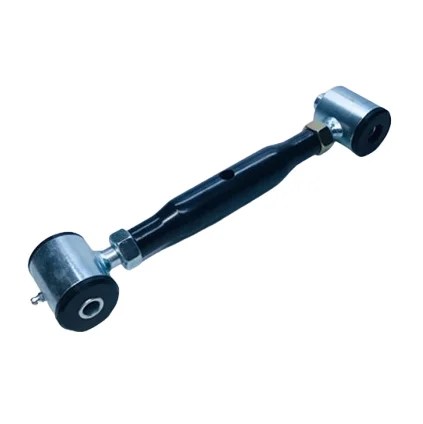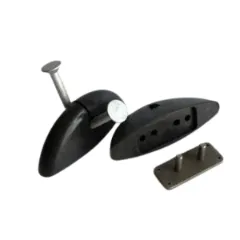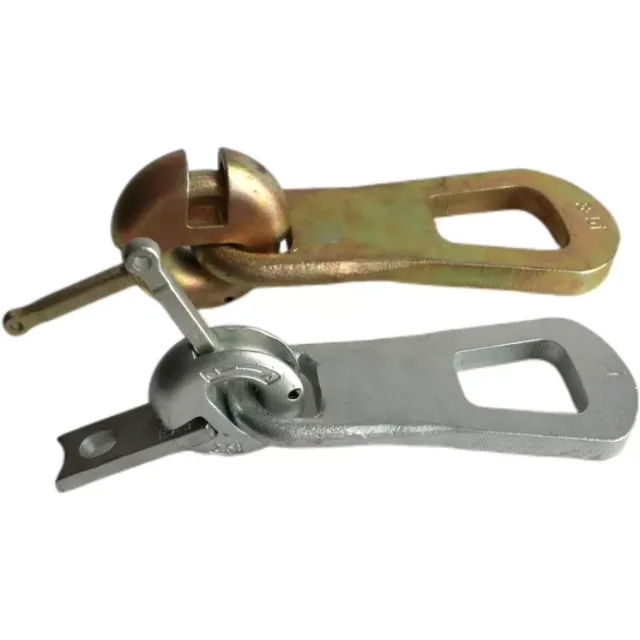Understanding What Is a Turnbuckle
What Is a Turnbuckle and Why Use It?
Turnbuckle is a device for tightening a rod or wire rope. Its components are sleeves connected with screws at one end and a turntable at the other end. The two ends are hook, eye and hook. The turn buckle can be attached to any convenient place on the rod or rope, or several can be connected in series if desired.
Pipe – pipe turnbuckles are a version of stainless-steel manufacturing but the body of the turnbuckle is enclosed in stainless steel pipe for cosmetic reasons such as wire railings so that threads are not visible unlike standard turnbuckle hardware.
UNC threaded so the fittings can be interchanged with standard turnbuckle fittings. A mechanical device used to adjust the tension or length of ropes, cables, tie rods, and other tensioning systems. It consists of two threaded eye bolts, one with a left-hand thread and the other with a right-hand thread, which are connected by a central body that can be rotated. This central body is often in the shape of a barrel, hexagonal nut, or hook
Types of Turnbuckles and Where They’re Used
The Turnbuckles produced by Qingdao Baoqi Intelligent Co., Ltd. are all manufactured strictly in accordance with the ASTM F1145-92 standard They undergo hot-dip galvanization to ensure durability and resistance to environmental conditions. These turnbuckles are recommended for use in straight or in-line pull applications exclusively.
The Hook & Eye type open body Turnbuckles are designed to provide an adjustable rigging connection that applies tension between two components, typically wire ropes and suspension points. The hook end features a wider design for enhanced strength, while the elongated eye at the opposite end facilitates easy attachment and reduces stress concentration.
Turnbuckles can be utilized independently or in combination with other turnbuckles to extend the length of an assembly. They serve as critical connection points for adjusting slack and tension within ropes, cables, or other rigging assemblies. Applications range from simple structures such as fences to complex systems like suspension bridges. Turnbuckles are widely employed across various industries, including construction, aviation, maritime transport, sports, and entertainment.
Why Turnbuckles Are Awesome
Galvanized Turnbuckles – hot dip galvanized steel for durability, resistance to corrosives, and weather resistance. Made for in-line or straight pull applications only. Specification of Turnbuckle: Stainless Steel – from small turnbuckles to larger assemblies 316L stainless turnbuckles offer high corrosion resistance and durability with standard UNC threading to interchange turnbuckle hardware. Stainless steel turnbuckles offer the highest resistance to high chloride or high moisture environments.
End fittings are Quenched and Tempered or Normalized, bodies heat treated by normalizing. Hot Dip galvanized steel. Lock Nuts available for all sizes. Proof load is 2.5 times of WLL, and Breaking load is 5 times of WLL.
Tools and Stuff You Need to Install a Turnbuckle
Tools You’ll Need
To put in a turnbuckle, you need some basic tools. Grab a wrench or pliers to tighten things. A measuring tape helps you line stuff up right. Wear safety gloves to keep your hands safe. For some jobs, you might need cable cutters or wire rope clamps. These help with ropes or cables.
Picking the Right Stainless Turnbuckle
Choosing a stainless turnbuckle depends on a few things. Think about how much weight it needs to hold. Check if it’ll be in a wet or salty place. Bigger turnbuckles are better for heavy jobs. Always read the maker’s instructions. This makes sure the turnbuckle fits your project.
Getting Ready to Install
Checking Your Turnbuckle Parts
Before you start, look at all the turnbuckle parts. Make sure nothing is broken or damaged. Check the threads on both ends. They should move smoothly. If something’s wrong, it could cause problems later. Good parts keep your setup safe and strong.
Staying Safe While Installing
Safety comes first when working with turnbuckles. Wear gloves and safety glasses. These protect you from getting hurt. Make sure all connections are tight before you add tension. This stops accidents or things going wrong.
Step-by-Step Guide to Installing a Turnbuckle
Hooking Up the Turnbuckle to Anchor Points
First, you need to attach the turnbuckle to anchor points. These are the spots where it connects. One end of the turnbuckle has a right-hand thread. The other has a left-hand thread. This lets you adjust tension by turning the middle part. Make sure both anchor points are strong. They need to hold the weight.
Use a wrench or pliers to attach one end to the first anchor point. Tighten it well. Then, do the same for the second anchor point. Check that everything is lined up and secure. Stainless turnbuckles are great for outside jobs. They don’t rust, so they last longer in wet places.
Adjusting the Tightness
Now, you can set the tension. Turn the middle part of the turnbuckle. Go clockwise to make it tighter. Go counterclockwise to loosen it. This moves the threaded ends closer or farther apart. It helps you control how tight the rope or cable is.
Use a measuring tape to check if the tension is even. This is super important for big projects like buildings or rigging. Stainless turnbuckles are smooth and strong. They make this step easier because they don’t wear out quickly.
Locking the Turnbuckle in Place
Once the tension is right, lock the turnbuckle. This stops it from loosening by mistake. Many turnbuckles have locking nuts or pins. Tighten these against the middle part with your tools. For heavy jobs, add extra safety stuff like wire rope clamps. These keep everything steady, even with lots of weight or bad weather.
Keeping Your Stainless Turnbuckle in Good Shape
How to Check and Care for Your Turnbuckle
Taking care of stainless turnbuckles helps them last longer. Look at them often. Check for scratches, bent parts, or worn threads. If connections feel loose, something might be wrong. Fix it right away.
Put some anti-rust oil on the threads now and then. This keeps them moving smoothly. For stainless turnbuckles, this also boosts their rust protection. Qingdao Baoqi Intelligent Co., Ltd. makes turnbuckles that fit your needs perfectly. They’re great for all kinds of projects.
Stopping Rust on Stainless Turnbuckles
Stainless turnbuckles don’t rust much. But salty or wet places can still be tough on them. Clean them with mild soap and water. This gets rid of dirt or salt. Don’t use rough cleaners. They can scratch the surface and hurt the rust protection.
If you’re near the ocean, rinse stainless turnbuckles with fresh water after use. This washes away salt. Store them in a dry place when you’re not using them. This keeps them safe from water damage.
Frequently Asked Questions
How Do I Attach a Stainless Turnbuckle the Right Way?
Use a wrench or pliers to connect each end to strong anchor points. Make sure everything is tight. Then, you can adjust the tension safely.
What Is a Turnbuckle Used For?
What is a turnbuckle? It’s a tool to tighten or loosen cables, ropes, or rods. People use it in building, rigging, and other jobs that need exact tension.
Why Pick a Stainless Turnbuckle?
Stainless turnbuckles don’t rust easily. They’re strong and perfect for wet or salty places like the outdoors or near the sea.
How Often Should I Check My Stainless Turnbuckles?
Look at them every few months. Or check before using them in important jobs. Watch for scratches, bent parts, or loose connections.
Can Stainless Steel Rust Over Time?
Stainless steel fights rust well. But salty or wet places can still cause problems if you don’t clean them. Wash them regularly to keep them strong.
For more details about our products at Qingdao Baoqi Intelligent Co., Ltd., specializing in forging and casting parts for over 10 years with ISO-9001 certification standards, visit our website today!










